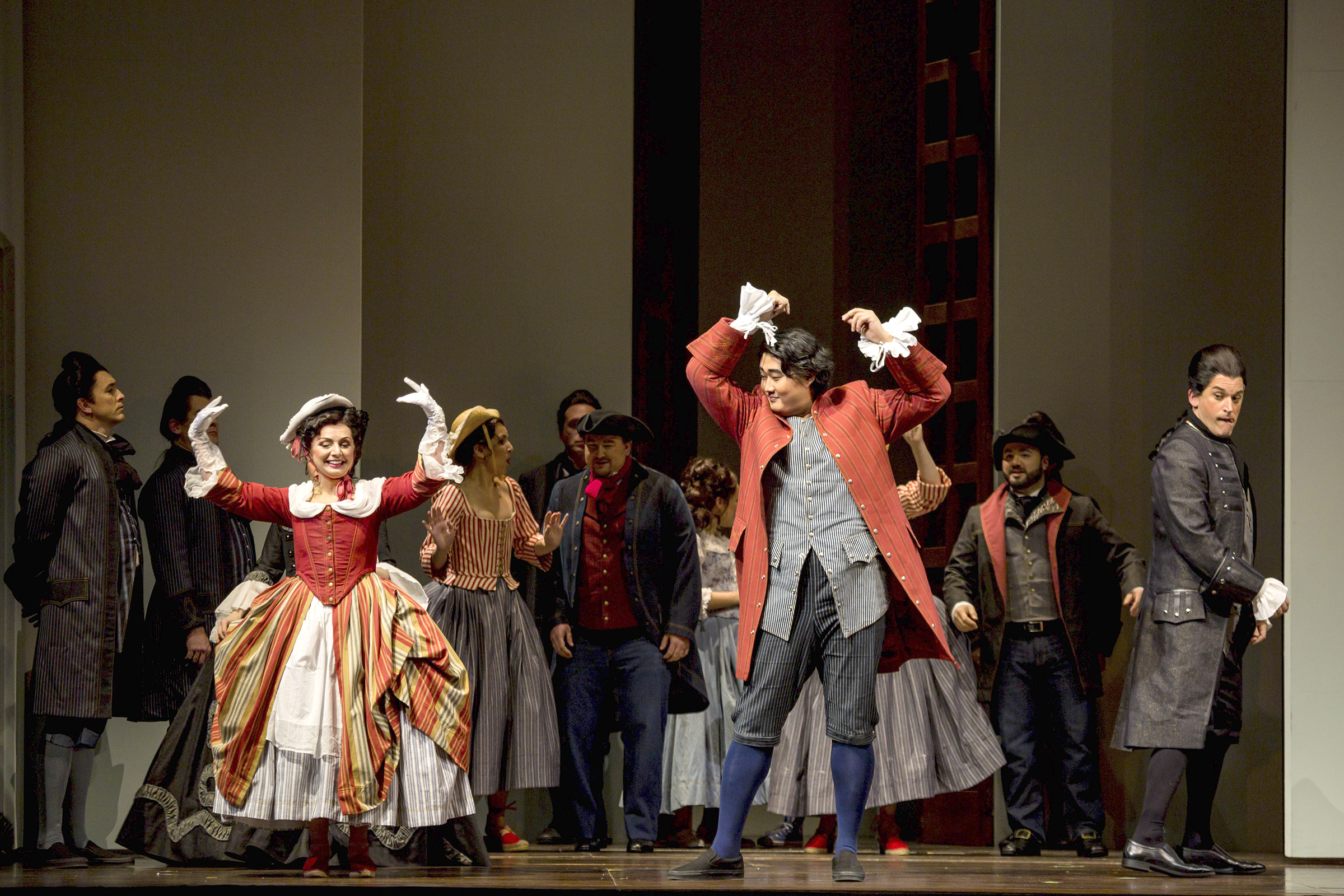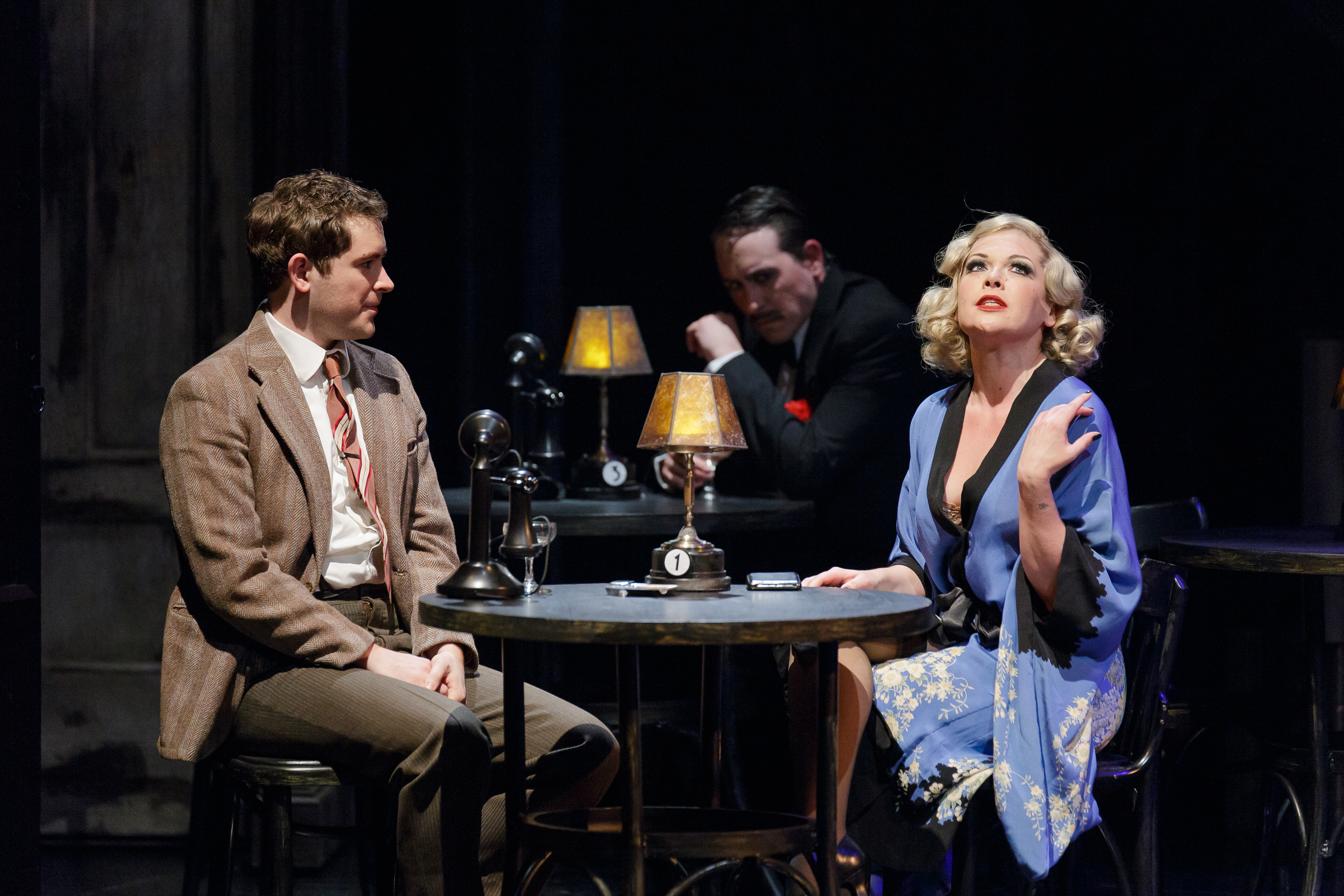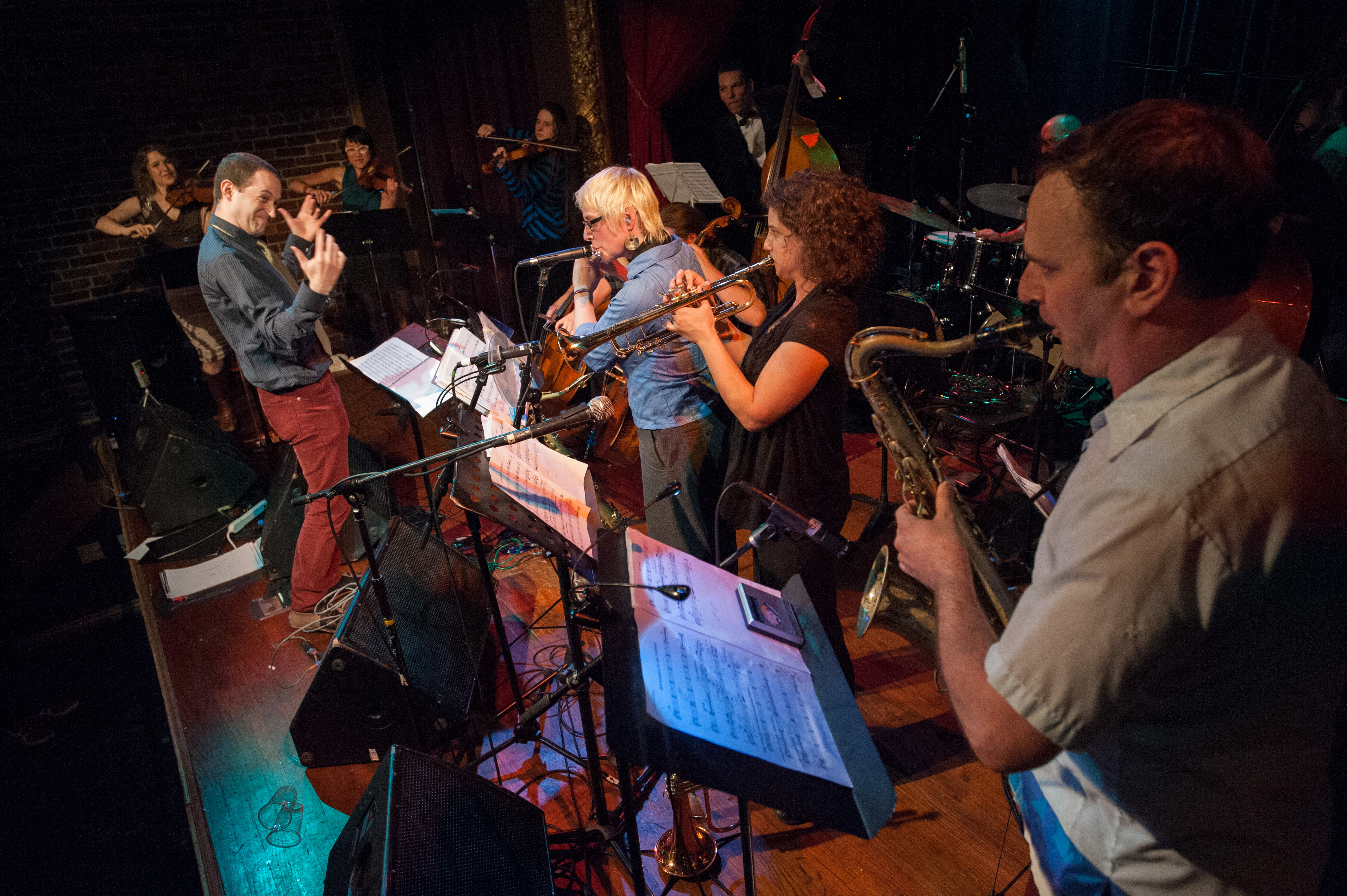The brand-new Cadence Chamber Orchestra plans to perform concerts in pairs, one in a traditional hall (tonight at 8, at Cornish College’s PONCHO Concert Hall) and one, putting the hay down where the goats can get it, in an unconventional venue. For their debut last night, conductor Tigran Arakelyan chose Capitol Hill’s coffeehouse/bar Cafe Metropolitain. Decorated with trompe-l’oeil storefronts, the faux-on-faux Cafe is to the Paris Las Vegas casino what the casino is to Paris itself. Clustered around small tables was a capacity, mostly young, crowd, and Hill denizens wandered in and out, amazed to see 30 musicians crammed into one side of the Cafe’s main room. The orchestra’s dress was completely informal–which I didn’t even notice until halfway through the show, which shows you how little it matters what classical performers wear onstage.The program was a Beethoven sandwich, opening with the premiere of Arshak Andriasov’s Torch No. 1 for trumpet, trombone, piano (in this case, Roland synth), and strings, a moody, stomping piece drawing from the folk-music style of Andriasov’s Armenian homeland, with a bit of the paprika of Bartok. As soon as the music started, eight people came and stood directly in front of me, the first drawback of holding concerts in a space like this. Another was the substandard acoustics; the predominance of the trumpets in the Beethoven was less a conductorial balance issue, I think, than that the strings were more easily swallowed by the ongoing white noise of bar chat.Balanced against these cons, of course, as Arakelyan and the orchestra intended, was a major pro: Probably most of the 20-somethings filling the place were new to Beethoven’s First. The group provided what must have been a gripping first impression. Arakelyan took all four movements at a good clip (taking repeats only in the third and fourth movements, he brought the thing in in around 20 minutes). His tempo worked excellently in the muscular, punchy first movement, less well in the balletic second, where the musicians, given little room to breathe and stretch, sounded like they were being prodded from behind. The third movement was white-hot yet lyrically phrased (and may even have gotten faster as it went along), the prankish finale strutted along genially.About half the orchestra left before Hindemith’s nose-thumbing, garrulous Kammermusik No. 1 from 1922, written for a small ensemble of about a dozen. It’s a long but intermittently interesting piece that will work better at Cornish; the last of the four movements, for example, includes rapid, murmuring figuration for the strings throughout, thousands upon thousands of notes that were inaudible to me, 10 feet away. The movement that came off the best was the third, a desolately wandering piece for three winds (labeled “Quartet,” even though the fourth instrument is a glockenspiel that plays only a sprinkling of F-sharps). The whole thing, though, despite its difficulties and the challenges of the venue, sounded well-rehearsed, confident, and convincing. It was an exciting debut, and the attention they’re paying to contemporary music makes me even more curious to see what and where they’ll play next.
More Stories From This Author
Capitol Hill Block Party Artist Panel Series 2019
The Capitol Hill Block Party Artist Panel Series 2019 is free (no festival wristband required), all-ages, and takes place from…
By
Seattle Weekly • July 9, 2019 11:10 am
Golden Idols will release new EP
Seattle quartet returns with ‘Uneasy’
By
Seattle Weekly • June 24, 2019 5:30 pm
Travis Thompson, Wolf Parade headline Fisherman’s Village fest
The Everett Music Initiative festival, May 16-18 in Everett, will showcase more than 50 acts.
By
Evan Thompson • March 18, 2019 12:00 pm






